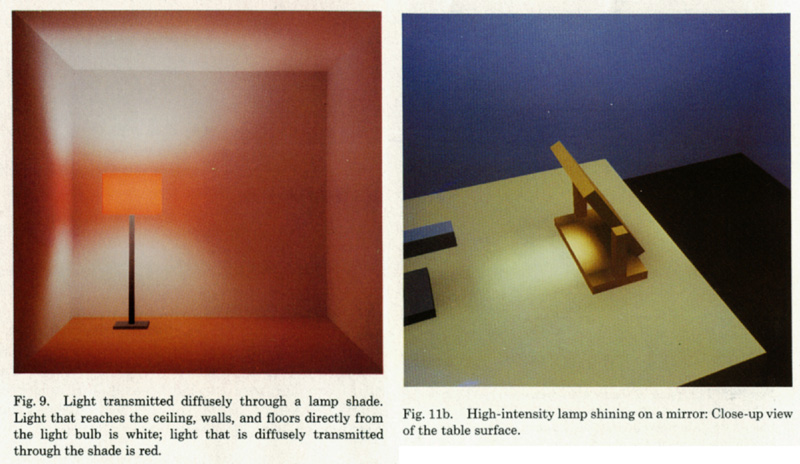|
|
[RT90]
Cornell University Program of Computer Graphics |
|
||||
Extending the radiosity method to include specularly reflecting and translucent materials.Holly E. Rushmeier and Kenneth E. Torrance.ACM Transactions on Graphics, 9(1):1--27, January 1990. An extension to the radiosity method is presented that rigorously accounts for the presence of a small number of specularly reflecting surfaces in an otherwise diffuse scene, and for the presence of a small number of specular or ideal diffuse transmitter. The relationship between the extended method and earlier radiosity and ray-tracing methods is outlined. It is shown that all three methods are based on the same general equation of radiative transfer. A simple superposition of the earlier radiosity and ray-tracing methods in order to account for specular behavior is shown to be physically inconsistent, as the methods are based on different assumptions. Specular behavior is correctly included in the present method. The extended radiosity method and example images are presented.
This paper is available as a PDF file RT90.pdf (2.8M).
| ||||||
| ||||||
